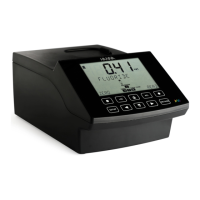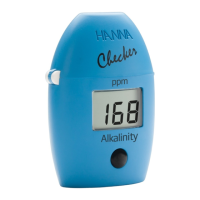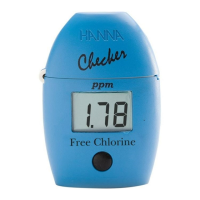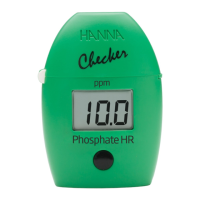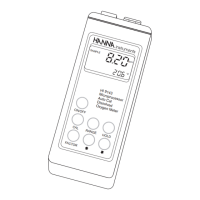7
TEMPERATURE COMPENSATION
The meter is designed to compensate for temperature, as the response of the pH
electrode is directly affected by temperature.
Automatic Temperature Compensation (ATC shown on LCD)
To use the ATC feature, submerge the temperature probe into the sample as close
as possible to the electrode and wait for a few minutes. The displayed pH reading
is compensated for the temperature of the sample.
Manual Temperature Compensation (MTC shown on LCD)
If the temperature probe is not connected, it is possible to enter the temperature
value manually.
• Record the sample temperature by using a ChecktempC (if you are measur-
ing temperature in °C, or ChecktempF for °F readings) or another accurate
thermometer.
• Press RANGE to select the temperature mode. The “°C” (or “°F”) symbol will
blink to indicate that the temperature probe is not connected.
• Use the UP and DOWN keys to display and set
the sample temperature (e.g. 25 °C).
• Press RANGE to select the pH measurement mode and immerse the electrode
into the sample. The displayed pH reading will be temperature compensated
at the set value (in this case at 25 °C).
ORP MEASUREMENTS
Oxidation Reduction Potential (ORP) measurements provide a quantification of
the oxidizing or reducing power of the sample tested.
• Connect the ORP electrode (optional) to the BNC connector.
• To enter the “mV” mode turn the instrument ON and press the RANGE key
until the display changes to mV.
• Submerge the ORP electrode tip (at least 4 cm / 1½”) into the sample to be
tested and allow time for the reading to stabilize
(hourglass symbol turns off).
• Measurements within the ±699.9 mV range are
displayed with 0.1 mV resolution, while outside
this range the resolution is 1 mV.
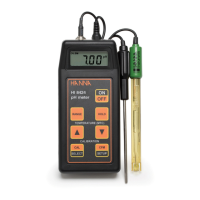
